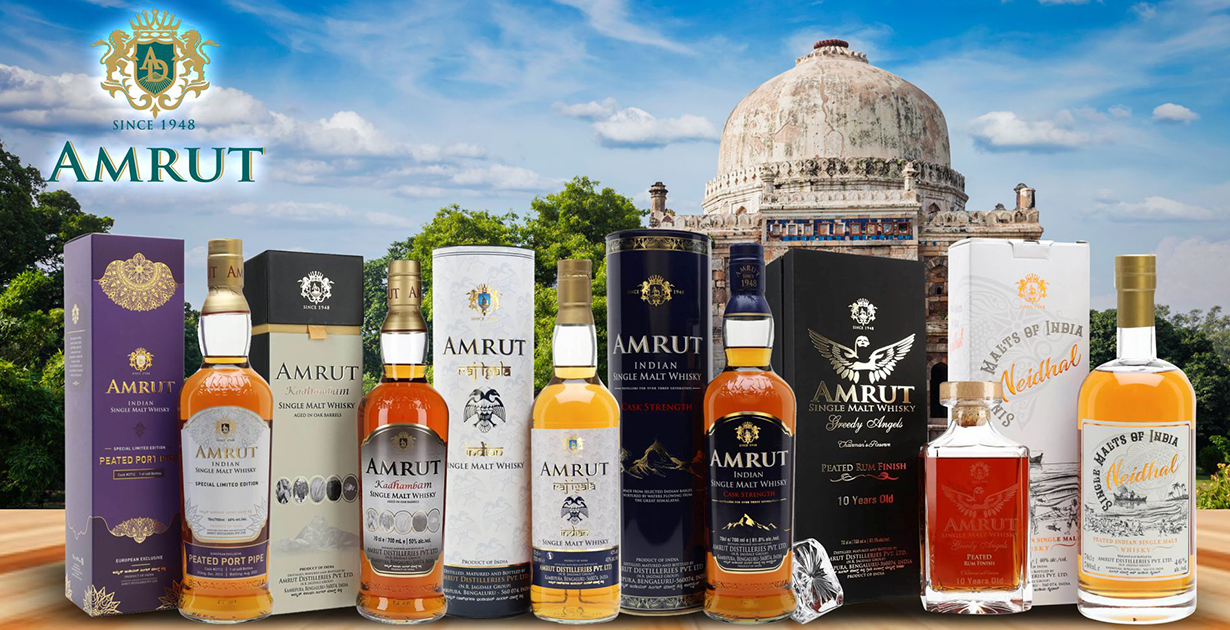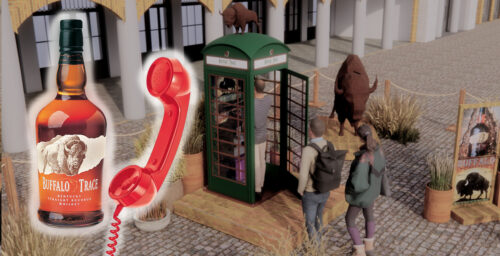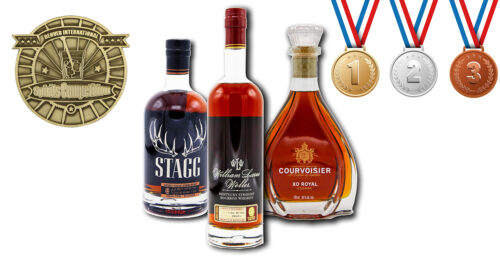India became the UK’s largest market for Scotch whisky by volume in 2022, importing 219 million bottles according to figures published by the Scotch Whisky Association (SWA). Surprisingly, Scotch whisky imports comprise only 2% of the Indian whisky market, as India is also amongst the world’s major whisky manufacturers, producing 189 million cases of whisky in 2019.
The majority of Indian spirits labeled as ‘whisky’ are closer to rum due to being distilled from molasses, falling within a category of alcohol termed as Indian-made foreign liquor (IMFL), and are marketed to domestic Indian consumers.
Historically, India’s malt whisky distillation occurred only on a small scale, as the production of alcohol from barley proved controversial in an era of widespread poverty and grain shortages.
Inspired by the continually expanding single malt market forged by the Scotch whisky industry, India’s distillers have aspired to release their own premium single malt whiskies, demonstrating the quality and unique character whisky gains in India’s tropical climate.
This is the first of three articles that explores the history and development of India’s four largest brands which have gained international recognition for Indian single malt whisky. Beginning with the pioneer of Indian whisky, Amrut Distilleries, which released India’s first single malt bottling in 2004.
A History of Amrut
Amrut was originally founded as Amrut Laboratories in Bangalore, Karnataka by JN Radhakrishna Rao Jagdale in 1947. As India’s alcohol licencing laws were liberalised in the postwar period distilling licences became easier to obtain, prompting JN Radhakrishna Rao Jagdale to establish Amrut Distilleries Ltd in 1948, and begin producing Indian Made Foreign Liquor (IMFL).
Inspired by Indian mythology and translated from Sanskrit, Amrut is named after the golden pot which once contained the Elixir of Life. JN Radhakrishna Rao Jagdale rapidly established Amrut as a significant alcohol manufacturer securing commercial contracts across Karnataka, and becoming the main IMFL supplier to the Indian military’s Canteen Stores Department (CSD) in 1962, a contract permitting the sale of Amrut products to personnel in depots across India.
Amrut Distilleries expanded into rum distillation in the 1960’s, and subsequently brandy distillation in response to a growing Indian market in the 1970’s.
In 1972, JN Radhakrishna Rao Jagdale’s son, Neelakanta Rao Jagdale joined Amrut Distilleries, becoming chairman and managing director when his father passed away in 1976.
How Was Amrut Whisky Made?
At a time when the majority of Indian distillers were producing whisky using molasses, Neelakanta Rao Jagdale decided Amrut would venture into malt whisky distillation from 1982, to produce a premium Indian whisky brand.
As India had no tradition of drinking single malts the early whisky was blended with alcohol distilled from sugarcane due to domestic taste preferences, and initially launched for retail through the CSD depots as ‘Prestige Blended Malt Whisky’ in 1986. In 1987, increasing malt whisky production led Amrut to build a new main distillery at Kambipura, on the Mysore Road, the main highway between Mysore and Bangalore.
Creating India’s First Single Malt Whisky
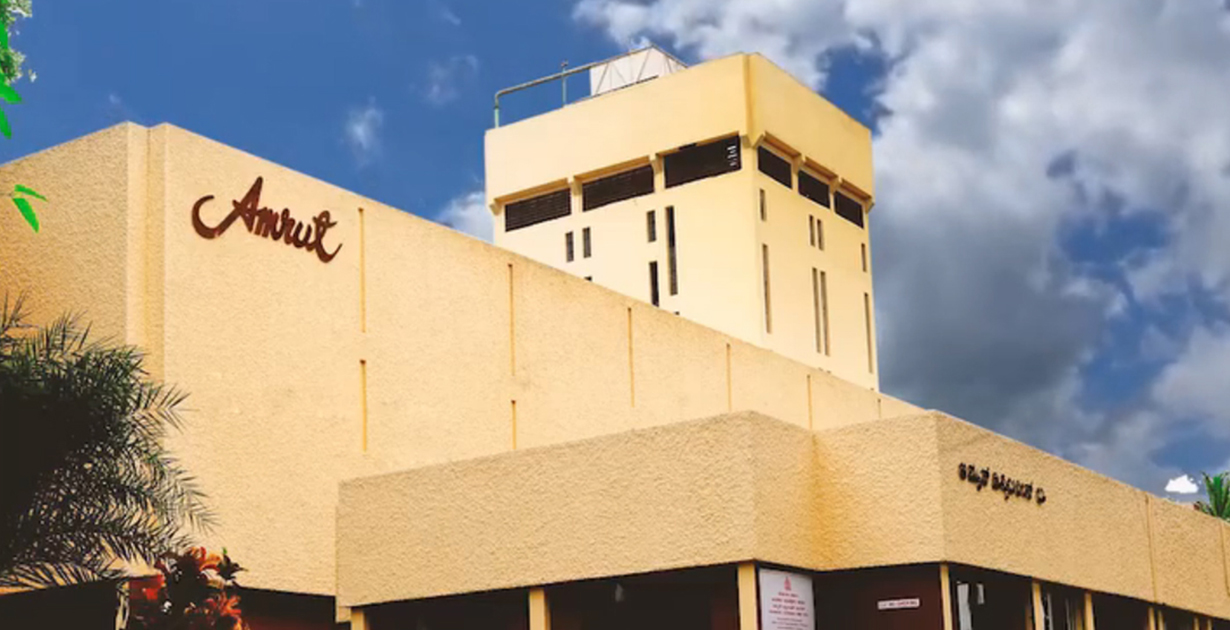
In 2001, Neelakanta Rao Jagdale asked his son, Rakshith Jagdale to investigate the potential for exporting Amrut’s malt whisky to the United Kingdom. After conducting a series of blind tastings in the UK, Rakshith Jagdale reported a majority of tasters compared Amrut’s whisky taste profile to Scotland’s Speyside region malts.
On the 24th of August 2004, Amrut Single Malt became the first Indian whisky released in the UK, at a launch event at Cafe India in Glasgow. Amrut Distilleries’ initial challenge was convincing European distributors and consumers to try Amrut whisky, due to perceptions that a quality single malt could not be produced in India.
Global Recognition of Amrut Whisky
Amrut’s malt gained greater recognition in 2005 when whisky writer Jim Murray’s ‘Whisky Bible’ awarded Amrut’s single malt 82 points. Following the UK launch, the Amrut single malt whisky brand was released across the majority of Western Europe and Scandinavian countries by 2006, and subsequently launched in South Africa in 2008, and Australia in August 2009.
Amrut Distilleries uses barley procured from the northern Indian states of Haryana, Punjab, and Rajasthan for distillation, believing indigenous Indian six-row barley strains impart more flavor into the whisky.
Amrut’s single malt undergoes a shorter maturation duration, in comparison to Scottish malts, due to the hot tropical climate in India’s Karnataka state, leading Amrut’s master blender, Surinder Kumar, to estimate one year of maturation in India, is the equivalent of three years in Scotland.
Amrut: Continuing Expansion
In 2009, the Amrut Fusion expression was launched, a single malt whisky produced using a combination of 75% unpeated Indian barley and 25% peated barley imported from Scotland. Amongst a selection of 4,000 whiskies, Jim Murray voted Amrut Fusion as the 3rd Best Whisky in the World in 2010, scoring the malt 97 points in his ‘Whisky Bible’.
Amrut has subsequently added a fully peated bottling, distilled using only imported Scottish peated barley, to the brand’s core range alongside cask strength versions of both Amrut’s peated and unpeated expressions. At the same time, they were experimenting with limited edition cask finishes, including double-cask, sherry cask, and a rye Indian whisky.
On 4th February 2010, Amrut Single Malt was launched domestically in Bangalore, and the brand was offered for sale in the Amrut distillery’s home state of Karnataka. From April 2010, Amrut expanded in the international market, when the brand launched in North America.
In India, a combination of high import taxes and complex excise laws between individual states have proven prohibitive to Amrut’s domestic market expansion, with the brand only available in Karnataka until November 2013, when Amrut launched in Mumbai for sale in India’s Maharashtra state.
Modern Amrut Whisky Bottlings
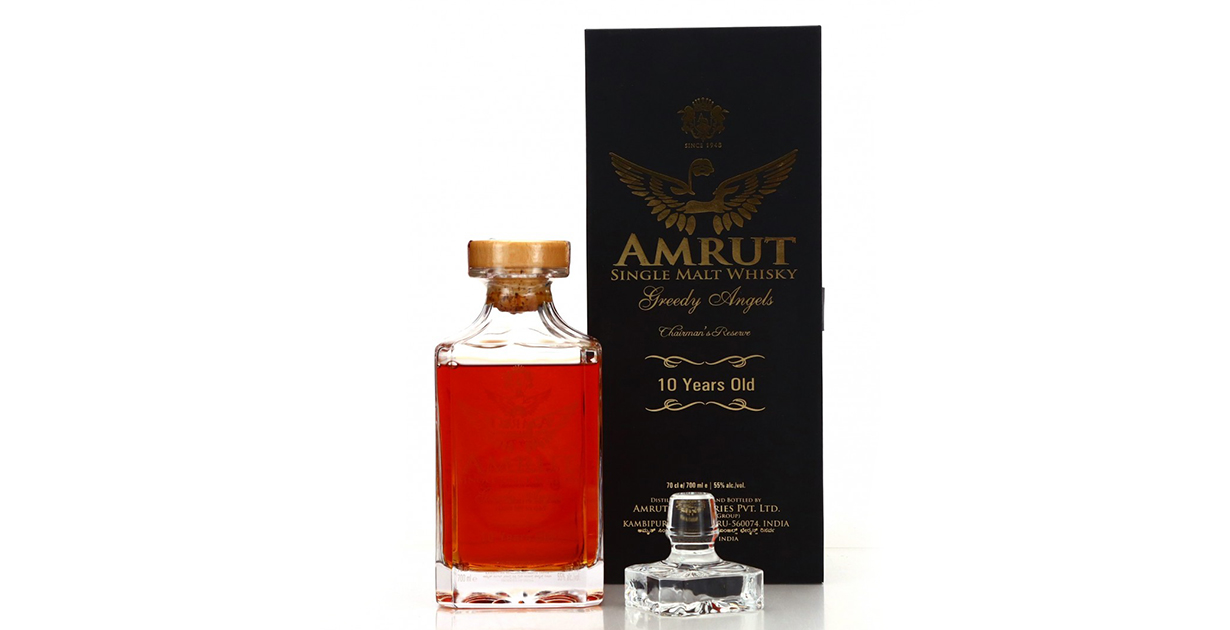
In 2016, Amrut released the oldest single malt bottling ever distilled in India, the Amrut Greedy Angels 12-Year-Old – Chairman’s Reserve was bottled at 60% ABV, and numbered only 100 bottles. The limited-edition expression was released in partnership with French spirit merchant, La Maison du Whisky, celebrating the specialist whisky retailers’ 60th anniversary.
The Amrut Greedy Angels expression name references the ‘Angels Share’, the liquid lost to evaporation during the maturation process, estimated to be between 10-12% annually in India as a result of the tropical climate. In comparison, Amrut’s core range expressions are matured for between 4-5 years.
A Timeline of Amrut Indian Whisky
1947 JN Radhakrishna Rao Jagdale founds Amrut Laboratories in Bangalore, Karnataka.
1948 As a liberalization of alcohol licensing laws makes distilling licenses easier to obtain, JN Radhakrishna Rao Jagdale founds Amrut Distilleries Ltd, and begins producing Indian Made Foreign Liquor (IMFL).
1960s Amrut Distilleries ventures into rum distillation.
1962 Amrut Distilleries becomes the main supplier of IMFL to the Indian military, Canteen Stores Department.
1970s Amrut Distilleries ventures into brandy distillation.
1972 JN Radhakrishna Rao Jagdale’s son, Neelakanta Rao Jagdale joins Amrut Distilleries.
1976 JN Radhakrishna Rao Jagdale passes away. Neelakanta Rao Jagdale becomes chairman and managing director of Amrut Distilleries Ltd.
1982 Neelakanta Rao Jagdale decides that Amrut will venture into the distillation of malt whisky to create class-leading whiskies, at a time when most Indian distillers are producing whisky using molasses.
1986 Amrut launches Prestige Blended Malt Whisky in India, blended with alcohol produced from sugarcane.
1987 Amrut builds a new main distillery at Kambipura, on the Mysore Road, to house the expanding malt whisky production.
2001 Neelakanta Rao Jagdale asks his son, Rakshith Jagdale to investigate the potential for exporting Amrut’s malt whisky to the United Kingdom.
2004 On the 24th of August 2004, Amrut Single Malt Whisky launches in the UK, with a launch event at Cafe India in Glasgow. In the following two years, Amrut launches across the majority of Western and Scandinavian European countries.
2005 Jim Murray’s Whisky Bible awards Amrut Single Malt Whisky 82 points.
2008 Amrut Single Malt Whisky launches in South Africa.
2009 Amrut Single Malt Whisky launches in Australia, in August 2009. Amrut Fusion whisky is launched, produced using 25% Scottish peated barley and 75% Indian unpeated barley.
2010 On 4th February 2010, Amrut Single Malt launched in Bangalore, with the brand offered for sale in the home state of Karnataka. In April 2010, Amrut Single Malt Whisky launches in North America. Amongst a selection of 4000 whiskies, Jim Murray votes Amrut Fusion the 3rd Best Whisky in the World, scoring 97 points.
2013 In November 2013, Amrut launches in Mumbai for sale in the Maharashtra state of India.
2016 Amrut launches the oldest single malt ever distilled in India, Amrut Greedy Angels 12-Year-Old – Chairman’s Reserve.

